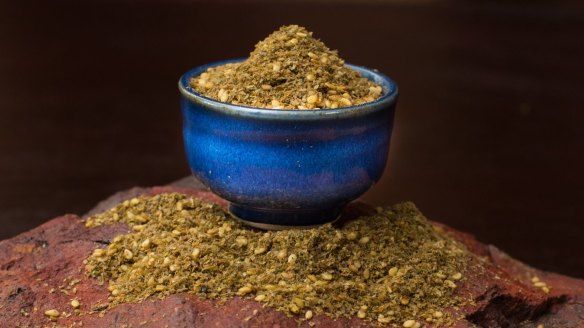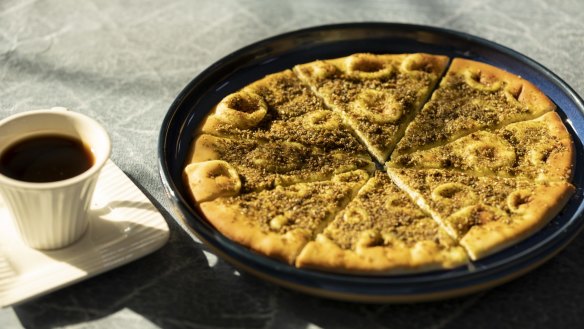Zaatar: Everything you need to know

What is it?
This is a beautifully aromatic Middle Eastern blend of wild thyme, sumac and roasted sesame seeds.
Ground into a coarse green powder dotted with sesame seeds, it is used as a topping for flatbreads and as a table condiment, used liberally like salt and pepper.

Why do we love it?
For many people, its complex aroma evokes memories of the Middle East. We adore the combination of thyme for high aroma, sumac for its dark citrus zing, and sesame for richness and a pleasing savoury note. A sprinkle can transform dishes from eggs to lamb.
Who uses it?
"Every child in the Middle East, from Jordan to Palestine and Syria, grew up with zaatar man'oushe, flatbread with zaatar on top," says Eddie Zanbaka, who founded Belmore Lebanese Bakery. He grew up in Zahle in central Lebanon but moved to Sydney 50 years ago, aged 12.
"In poor times, that was all we had, but we were particularly fed more zaatar before exams," he says. "They said zaatar was good for the brain and memory. I read scientists have proved that!"
How do you use it?
Zaatar loves root vegetables, white fish, white meat, bread dough, corn, chickpeas and greens.
Use it sparingly on your morning eggs, then your lunchtime salad, a little more on your after-work hummus, and then a generous amount as both a marinade and a spice rub for roast chicken, lamb cutlets or grilled octopus.
The two things to remember about zaatar is that it will burn and become bitter at high temperatures and that it loses aroma and pungency with age.
Where do you get it?
Supermarkets stock acceptable zaatar but try Middle Eastern grocers such as Oasis in Murrumbeena and Fairfield (Victoria) or Gemma Supermarket, Auburn (NSW). Online taswaqmecca.com.au or essentialingredient.com.au
Appears in these collections
From our partners
Original URL: https://www.watoday.com.au/goodfood/zaatar-everything-you-need-to-know-20210510-h1vpsn.html
